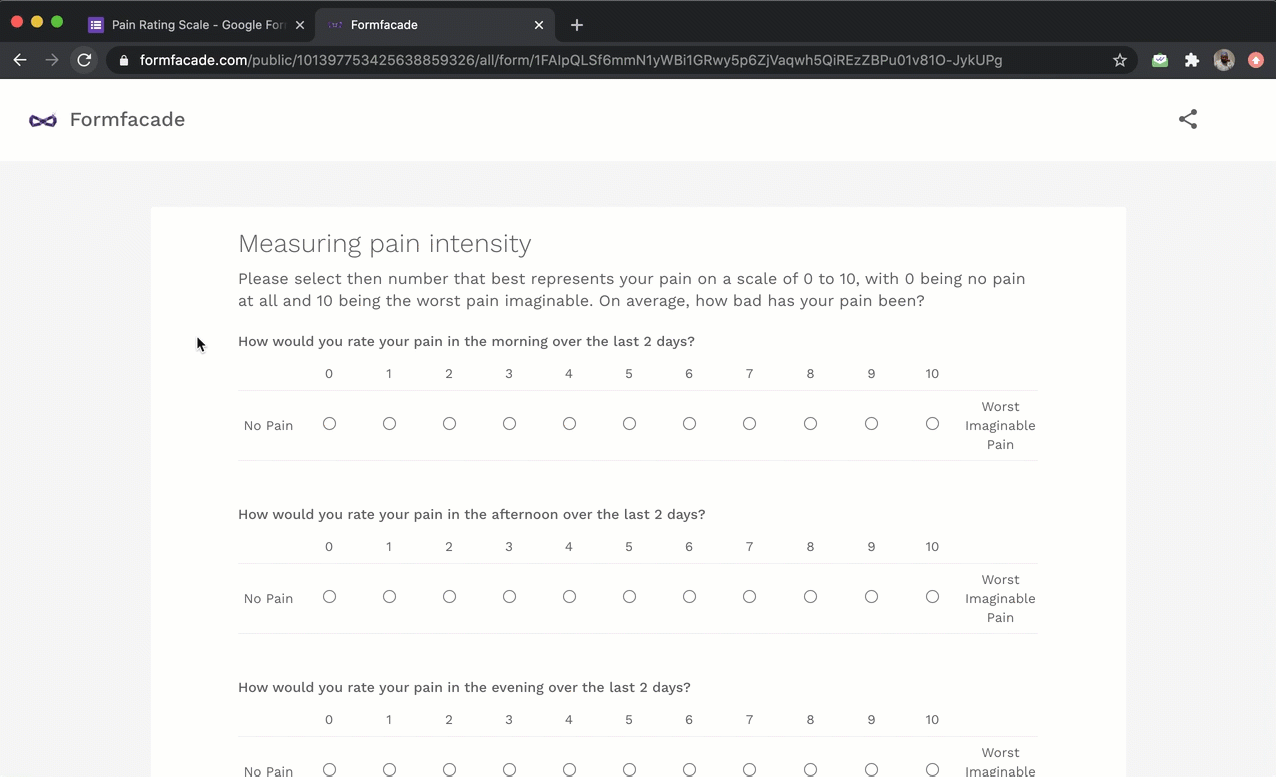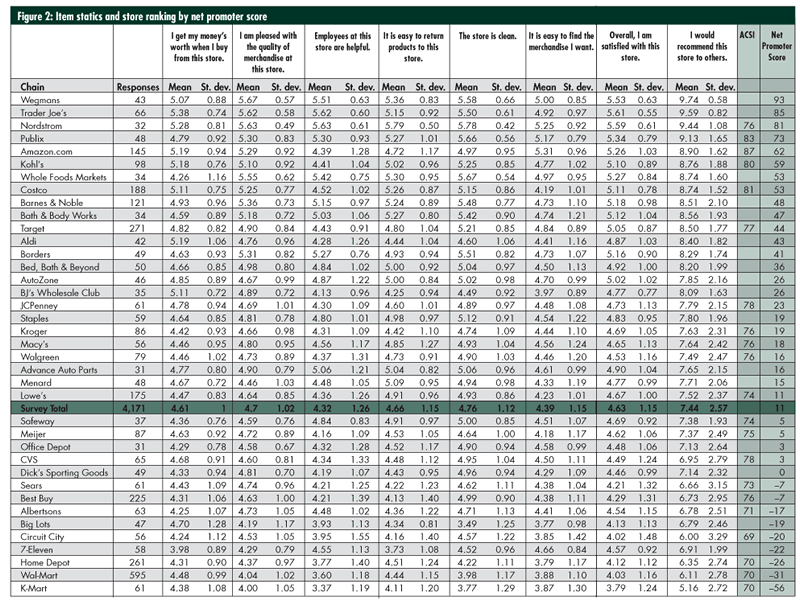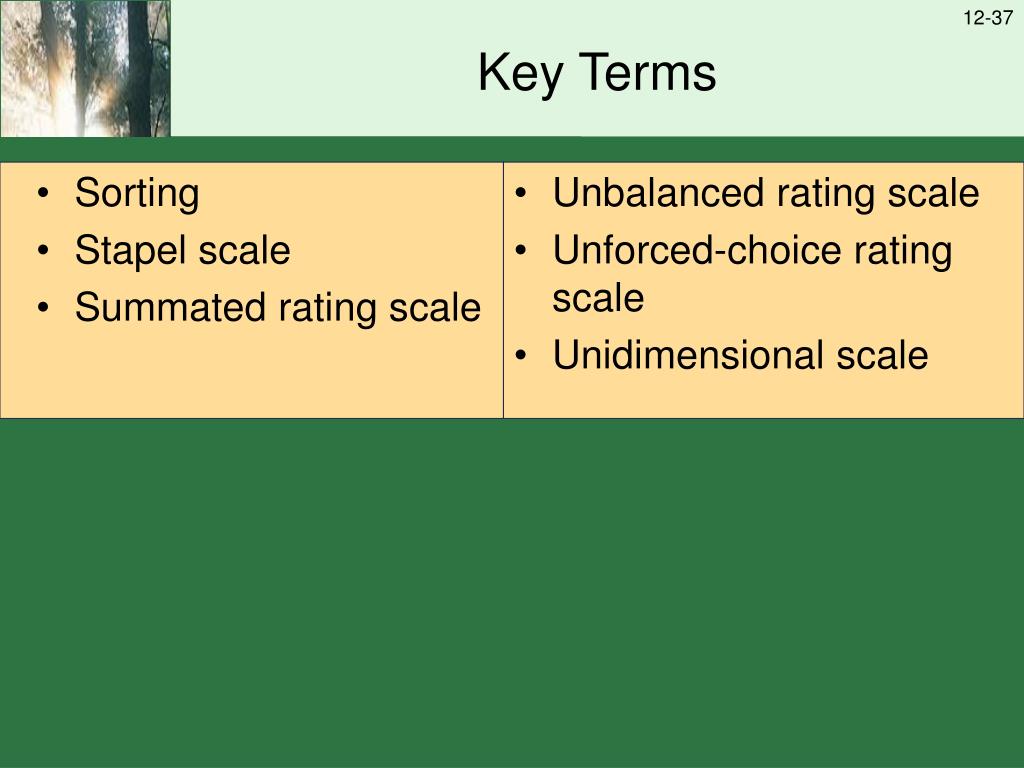44 response scales how many points and what labels
4 Measurement Scales Every Researcher Should Remember A Likert scaletypically contains an odd number of options, usually 5 to 7. One end is labeled as the most positive end while the other one is labeled as the most positive one with the label of 'neutral' in the middle of the scale. The phrases 'purely negative' and 'mostly negative' could also have been 'extremely disagree' and 'slightly disagree'. Survey Scale: Definitions, Types + [Question Examples] In a graphic rating scale, the answer options provided are placed on a scale of 1-3, 1-5, and so on. Respondents can choose an option on the scale that reflects their rating for a specific assertion in the data collection context. A good example of this type of rating scale is the Likert scale . Graphic Rating Scale Question Sample
Employee Performance Rating Scales in 2022: Examples & Definitions Overall performance ratings are given on a 5-point scale, observing employees with performances that are: 5 = Leading. 4 = Strong. 3 = Solid. 2 = Building. 1 = Not Meeting Expectations. Goals are also tracked using a 3-point rating scale that measures whether a goal or project was on time, on budget, and accomplished. 3 = Goal Was Met.

Response scales how many points and what labels
Working with "Check All That Apply" Survey Data (Multiple Response Sets ... Multiple response sets occur when you have a set of related choices or characteristics in which a subject or experimental unit can possess one or more of those characteristics. In this tutorial, we will focus on a specific type of multiple response set: multiple response (or "check-all-that-apply") questionnaire items. PDF Typical Survey Response Scales - STLHE n Bipolar scales (Disagree to Agree) have a maximum reliability and validity at 7 points whereas unipolar scales (e.g., Not True at all to Completely True) have a maximum reliability and validity at 5 points (Krosnick & Fabrigar, 2003) n Numeric labels seem to increase confusion rather than verbal labels (Krosnick & Fabrigar, 2003) What Is the Best Response Scale for Survey and Questionnaire Design ... points use for their survey and questionnaire. Taken as a whole this study suggests using of seven-point rating scale and if there is a need to have respondent to be directed on one side, then six-point scale might be the most suitable. Key Words Response Scale, Rating Scale, Attitude Scale, Liker Scale, Scaling Method, Response Rate,
Response scales how many points and what labels. How to Label Your 10-Point Scale - Versta Research Plenty of research shows that numeric scales going from 1 to 10 (ten points) are less effective than numeric scales going from 0 to 10 (eleven points). A recently published article in Survey Practice adds more evidence to that claim, and also suggests that the midpoint of the scale should be labeled along with the endpoints: User Experience Rating Scales with 7, 11, or 101 Points: Does It Matter? To ease comparison, all 7- and 11-point data were converted to a 0-100 (101-point) scale. For 11-point items, the conversion was to simply multiply scores by 10. For 7-point items, the conversion was to subtract 1 from the score, then multiply by 100/6 (which, for example, converts a 1 to 0 and a 7 to 100). Performance Rating Scale - How to build a fail proof ... - unremot The 5 point rating scale. The 5 point rating scales are one of the most widely used performance rating scales in the world. The method to rate an employee is fairly simple. The reviewer has to rate each employee out of 5 with 3 being the midpoint. Anything beyond 3 is considered that the employee is exceeding expectations. Likert Scale Response Anchors - Sawtooth Software Below are some popular Likert-type scales that you can use in your Sawtooth Software CiW (general interviewing) questionnaires. Level of Acceptability Totally unacceptable Unacceptable Slightly unacceptable Neutral Slightly acceptable Acceptable Perfectly Acceptable Level of Appropriateness Absolutely inappropriate Inappropriate
Likert Scale: What It Is & How to Use It | SurveyMonkey Our methodologists recommend five scale points for a unipolar scale, and seven scale points if you need to use a bipolar scale. Keep it continuous. Response options in a scale should be equally spaced from each other. This can be tricky when using word labels instead of numbers, so make sure you know what your words mean. Keep it inclusive. Survey rating scales—types and examples - SurveyMonkey There are many different types of rating scales, which suit different types of questions or situations. Firstly, there are ordinal (word-based) scales and interval scales (number-based or numerical rating scale). Then there's a third type—the graphic rating scale—which can use either numbers or words. We'll define each type below, talk ... A classification of response scale characteristics that ... - SpringerLink In total, they considered more than 280 possible choices, among which 40 choices are related to the design of the scale and belong to 17 characteristics. Table 2 in Appendix provides the list of response scales' characteristics and the choices considered by these authors. Survey rating scales: numbered vs worded lists | SurveyMonkey With worded labels, the researcher has the freedom to score and label categories however they feel without confusing the respondent. Scaling can also be unbalanced, and the scoring could look something like this: Extremely Good = 10 Very Good = 8 Good = 6 Not Bad = 5 Bad = 3 The Worst = 0
Survey Rating Scales to Guide Survey Respondents Effectively Five point scales are most popular followed by seven point scales. These scale ranges tend to work best. Beyond a 7 point scale participants have trouble responding the same way if they repeated the survey, so we recommend staying away from anything above 7 points. Here is an example of a 5 point Likert Rating Scale: Strongly disagree Disagee Rating Scale: Definition, Survey Question Types and Examples Graphic Rating Scale: Graphic rating scale indicates the answer options on a scale of 1-3, 1-5, etc. Likert Scale is a popular graphic rating scale example. Respondents can select a particular option on a line or scale to depict rating. This rating scale is often implemented by HR managers to conduct employee evaluation. Your Guide to Rating Scale Questions in 2022 - Qualtrics The scale's points should map as closely as possible to the underlying idea (construct) of the scale. Also, the scale should give enough points to differentiate respondents from one another as much as validly possible. It should be easy to interpret the meaning of each scale point - i.e. the meaning of scale points should be interpreted ... Survey Response Scales - Answer Format and Types of Questions Three-point, five-point, and seven-point scales are all included in the umbrella term "rating scale". A rating scale provides more than two options, in which the respondent can answer in neutrality over a question being asked. Examples: 1. Three-point Scales Good - Fair - Poor Agree - Undecided - Disagree Extremely- Moderately - Not at all
Survey rating scales 1-5: Understand your audience better Rating scales range from super simple to highly complex. Each rating scale can be used to gather specific data. Here's a list of five common rating scales and how they can be used in surveys: Likert scale. Participants rate their level of agreement to items that describe a topic, like customer satisfaction, usability, or loyalty.
The 4,5, and 7 Point Likert Scale + [Questionnaire Examples] 3 Point Likert scale is a scale that offers agree and disagree as to the polar points along with a neutral option. Like the 2-point scale, the 3 point scale is also used to measure Agreement. Options will include: Agree, Disagree, and Neutral. 6 Points Likert Scale A 6 point Likert scale forces choice and gives better data.
20 Free Ready-Made Survey Rating Scale Examples - AidaForm Four or six-point scales make your respondent choose between "for" and "against." You would love to have objective data, after all. How strongly do you agree or disagree with the statements? Strongly Disagree Disagree Neither Agree nor Disagree Agree Strongly Agree Person A is a highly-qualified specialist Person A is an efficient project manager 5
15 Common Rating Scales Explained - MeasuringU The classic Likert item uses a 5-point response scale, but you can use 7, 9, or other points, too. (Although someone will have a strong opinion about the "right" number of steps.) Because the response scale is about agreement, be sure items are phrases participants can agree or disagree to.
The Effect of Rating Scale Format on Response Styles: the Number of ... numbers of response categories and varying label formats (e.g., 7-point rating scales labeled at the endpoints, fully labeled 5-point scales, etc.) but have few guidelines when selecting a specific format. Drawing from the literature on response styles, we formulate hypotheses on the effect of the labeling of response categories and the
Color, Labels, and Interpretive Heuristics for Response Scales positive and negative numerical labels. As figure 4 shows, labeling the low. end of a scale with negative numbers or shading those options with a different. color tend to push the responses to the ...
Should All Scale Points Be Labeled? - MeasuringU For example, coming up with labels for each of the points on the eleven-point Likelihood to Recommend item would likely be impractical; endpoints and a neutral label may be all that can be done. But labeling each response option for five- and seven-point scales is practical and a fairly common practice.
Survey Response Scales: How to Choose the Right One - CXL How you design a survey or a form will affect the answers you get. This includes the language you use, the order of the questions, and, of course, the survey scale: the default values and ranges you use. Survey response scales can be embedded in the survey (e.g., 1-5, 1-10, etc.), chosen via a drop-down menu, or included as part of the survey language.
What is a Likert Scale? Definition, Examples, and Usage - SurveyLegend Most researchers agree that the best Likert scales are the 5-point and 7-point varieties. This simply refers to how many responses the person has to choose from. Most Likert scales you see are going to be odd-numbered. They will have an equal number of positive and negative responses on either side of a neutral response.
Color, Labels, and Interpretive Heuristics for Response Scales These items asked respondents to rate how successful, happy, overweight, nervous, fit, and moody they were on seven-point scales, with the endpoints labeled "Not at all _______" and "Very ________" (for example, "Not at all successful" and "Very successful"). The first item had been used by Schwarz and his colleagues (Schwarz et al., 1991 ).
What Is the Best Response Scale for Survey and Questionnaire Design ... points use for their survey and questionnaire. Taken as a whole this study suggests using of seven-point rating scale and if there is a need to have respondent to be directed on one side, then six-point scale might be the most suitable. Key Words Response Scale, Rating Scale, Attitude Scale, Liker Scale, Scaling Method, Response Rate,
PDF Typical Survey Response Scales - STLHE n Bipolar scales (Disagree to Agree) have a maximum reliability and validity at 7 points whereas unipolar scales (e.g., Not True at all to Completely True) have a maximum reliability and validity at 5 points (Krosnick & Fabrigar, 2003) n Numeric labels seem to increase confusion rather than verbal labels (Krosnick & Fabrigar, 2003)
Working with "Check All That Apply" Survey Data (Multiple Response Sets ... Multiple response sets occur when you have a set of related choices or characteristics in which a subject or experimental unit can possess one or more of those characteristics. In this tutorial, we will focus on a specific type of multiple response set: multiple response (or "check-all-that-apply") questionnaire items.











Post a Comment for "44 response scales how many points and what labels"